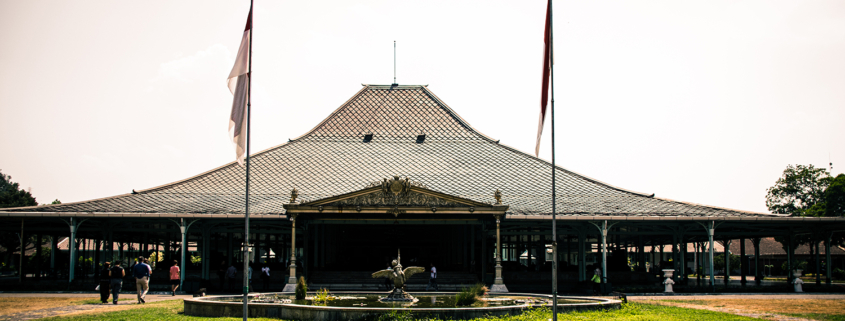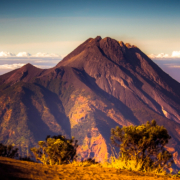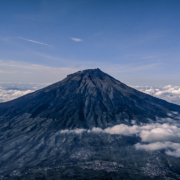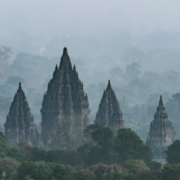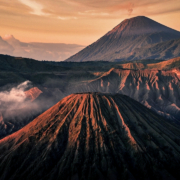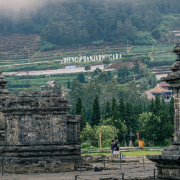Mangkunegaran Palace: The Graceful Soul of Solo’s Noble Heritage
In the heart of Surakarta (Solo), just a few kilometers from the Kraton Surakarta Hadiningrat, stands the elegant and spiritually refined Mangkunegaran Palace (Pura Mangkunegaran)—a princely estate that echoes the grace, philosophy, and artistic soul of the Mangkunegaran Royal House. Established in 1757 as a result of political divisions within the Mataram Kingdom, this palace became the seat of the Mangkunegara princes, a line of Javanese nobility renowned for their devotion to culture, military leadership, and spiritual refinement.
Today, Pura Mangkunegaran functions not only as a residence of royal descendants but also as a living museum of Javanese arts, mystical values, and courtly beauty—open to all who wish to connect with the nobility of Java’s past and the elegance of its spiritual traditions.
Historical Background
The Mangkunegaran principality was born out of a turbulent period in Javanese history. Following internal power struggles and the intervention of the Dutch East Indies government, the Treaty of Salatiga (1757) officially split the Surakarta Kingdom. Raden Mas Said, a charismatic war commander and spiritual mystic known for his resistance against colonial powers, was granted rulership over a new principality—thus becoming Mangkunegara I.
He established Pura Mangkunegaran as his royal seat, modeled after the main Kraton but imbued with his unique character: independent, contemplative, and highly artistic. Over generations, the Mangkunegara rulers have left a legacy of literature, dance, music, military excellence, and diplomacy that continues to influence Central Java’s cultural fabric.
Architectural Layout and Design
Pura Mangkunegaran was built with a deep understanding of Javanese cosmology and court aesthetics, but with a more open and intimate atmosphere than the more imposing Surakarta Kraton. Key features include:
- Pendopo Ageng – One of the largest traditional Javanese open pavilions, supported by intricately carved teak columns, used for ceremonial gatherings, performances, and public audiences.
- Pringgitan and Dalem Ageng – Enclosed areas that transition into the private royal residence and serve as the heart of the palace’s spiritual and philosophical life.
- Keputren – The female quarters, where the noble women of the palace lived and practiced traditional Javanese rituals and arts.
- Pura Mangkunegaran Museum – A curated space displaying royal artifacts such as:
- Heirloom keris (sacred daggers)
- Gold-embroidered royal costumes
- Gamelan sets, shadow puppets, and dance regalia
- Ancient Javanese manuscripts and historical photographs
The layout reflects inner-outer spatial sanctity, with zones of increasing spiritual importance as one moves inward—a mirror of the journey toward the divine center of self.
Cultural and Artistic Significance
Mangkunegaran Palace has long been a cradle of Javanese high culture, serving as a patron and protector of the following:
- Javanese Classical Dance – The palace developed its own refined dance style, often performed during rituals and royal events. Mangkunegaran-style dance is characterized by controlled elegance, philosophical symbolism, and spiritual depth.
- Gamelan Music – The palace houses a complete set of sacred gamelan orchestras, some of which are believed to possess spiritual energy and require ceremonial offerings before performance.
- Wayang Purwa (shadow puppetry) – The Mangkunegaran tradition of wayang emphasizes philosophical storytelling from the Mahabharata and Ramayana, integrating Javanese values like tepa selira (empathy), sasmita (intuition), and laku (spiritual discipline).
It is also known for preserving Javanese literary works, such as mystical poetry and court chronicles, which explore themes of cosmic balance, the nature of kingship, and the path to inner sovereignty.
Philosophical and Mystical Elements
Mangkunegaran is not merely a palace—it is a spiritual school in stone and sound. The legacy of its founders, especially Mangkunegara I and Mangkunegara IV, infuses the palace with a unique blend of:
- Kejawen (Javanese mysticism) – A syncretic spiritual system combining Hindu-Buddhist philosophy, Islam, ancestral wisdom, and meditative practices.
- Inner Nobility (Kraton of the Self) – Emphasis is placed on the noble soul (batin) over bloodline, teaching that true rulership begins with mastering oneself, not dominating others.
- Tapa Brata (austerity and discipline) – Many Mangkunegara rulers practiced fasting, silence, and asceticism as spiritual preparation for leadership.
The palace continues to hold sacred ceremonies and spiritual observances that connect modern-day Java to its mystical past.
Modern Role and Visitor Experience
Though no longer a seat of political power, Mangkunegaran Palace functions as:
- A cultural center – Hosting regular dance and gamelan performances
- A ceremonial hub – For Javanese royal rituals, spiritual events, and sacred processions
- A heritage museum – Open to the public with guided tours that offer insights into Javanese royal life
Visitors are welcomed into an atmosphere of quiet dignity and elegance, where court retainers still wear traditional attire, and the echoes of royal refinement still hum through the pillars.
Visitor Information
- Location: Jalan Ronggowarsito, Solo City, Central Java
- Opening Hours: 9:00 AM – 2:00 PM (Monday to Saturday); hours may vary on ceremonial days
- Entrance Fee: Modest, with optional guides available in English and Bahasa Indonesia
- Tips:
- Visit during scheduled performances for a fuller experience of Javanese court art.
- Dress respectfully and observe silence in sacred spaces.
- Ask about traditional dance lessons or batik workshops occasionally offered onsite.
Pura Mangkunegaran is the soul-mirror of Javanese nobility—smaller than the Kraton, yet no less profound. It carries the refined pulse of spiritual kingship, sacred arts, and inner mastery that defined a lineage of warrior-mystics who led with integrity, poise, and prayer. For those seeking not just history but harmony, not just heritage but heartfelt elegance, Mangkunegaran offers an intimate communion with the noble spirit of Java.
To visit is to walk softly through the living memory of a refined world, where every movement, melody, and mantra still honors the unseen.

